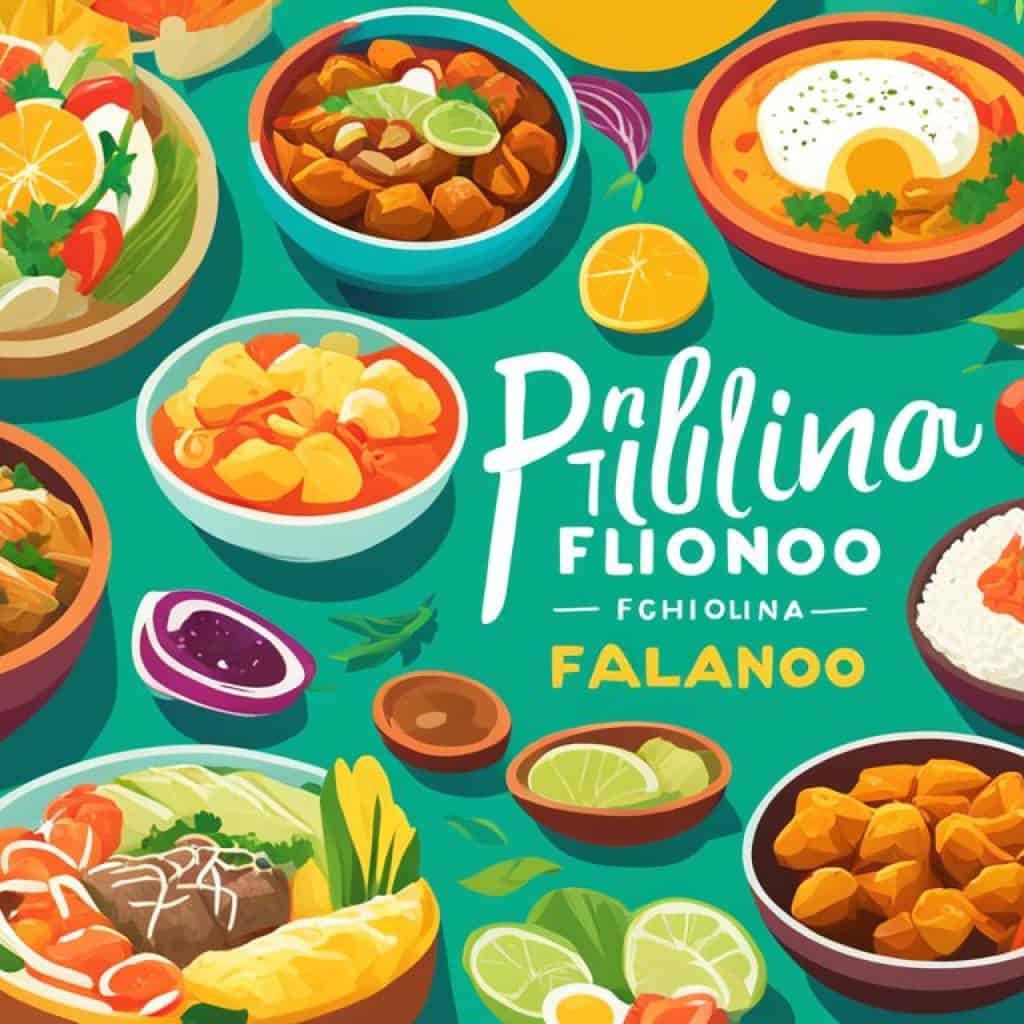Ever wondered about the language spoken in the Philippines? Is it only one or many in this unique place?
The Philippines is known for its cultural richness and various places. It has many languages and dialects. But Filipino or Tagalog is the main language. Over 90% of the people speak it. It is key for communication, learning, and national identity.
Key Takeaways:
- Filipino or Tagalog is the official language of the Philippines.
- It is spoken by over 90% of the population.
- The language is influenced by Spanish and English due to the country’s colonial history.
- In addition to Filipino, there are over 170 other languages and dialects spoken in the Philippines.
- English serves as another widely spoken language in the country.
History of the Filipino Language
The Filipino language, known as Tagalog, has a deep history that spans centuries. It has been spoken in the Philippines for generations. Over time, it evolved into the Filipino language we know today.
During the Spanish colonization, the Filipino language changed a lot. Many Spanish words were added to its vocabulary. This mix of Spanish has greatly shaped the language.
In the 20th century, there was a push to make Tagalog the national language. This was to bring the country’s different language speakers together. In 1987, the constitution named Filipino as the national language, a big step for unity and identity.
The history of the Filipino language is linked to the country’s rich culture and colonial past. Filipino stands as a symbol of the language’s resilience and adaptability.
Even with Filipino as the official language, English is still important in the Philippines. It’s used in business, education, and media. The Filipino people’s ability to speak both languages shows their openness to the world while keeping their unique language identity.
Dialects and Regional Languages
In the Philippines, over 170 unique languages and dialects enrich the country. They are spoken by various communities across the islands. This shows the Philippines’ vast linguistic diversity.
Among these are Cebuano, Ilocano, Hiligaynon, and Bicolano. Each language stands out and is spoken in certain areas or alongside Filipino.
The Philippines’ many languages show its cultural wealth and history. They reflect the lives of diverse peoples and regions. This variety comes from the country’s rich history and its many indigenous groups.
“The Philippines is a linguistic treasure trove, where languages reflect the vibrant tapestry of our culture and history.”
Regional languages enhance local identity and keep culture alive. They are used in storytelling, poetry, and music. These elements reflect Filipino cultures vividly.
Learning about these languages connects us deeply with Filipino traditions. It lets us explore the country’s rich cultural layers more fully.
Let’s explore the Philippines’ linguistic diversity. Below is a table showing some major regional languages and where they’re spoken:
| Language | Spoken in |
|---|---|
| Cebuano | Cebu, Bohol, Eastern Visayas, and some parts of Mindanao |
| Ilocano | Ilocos Region, Cordillera Administrative Region, and parts of Cagayan Valley |
| Hiligaynon | Western Visayas, Negros Island, and parts of Palawan |
| Bicolano | Bicol Region, parts of Southern Luzon, Catanduanes, and Masbate |
These languages offer a peek into the unique Philippine linguistic scene. Each language marks a group’s identity and heritage.
As we look closer at the Philippines’ languages, we’ll learn about official languages and English’s role. We’ll see how languages shape Filipino culture and identity.
Official Language Status
Filipino is recognized as the national language of the Philippines, along with English. The 1987 constitution grants it official status. This shows how important Filipino is to the nation’s identity and unity.
English is also key, used in government, education, and more. The Philippines promotes both languages to help everyone communicate well.
Having two official languages shows the Philippines values all its people and their languages. This helps everyone use both Filipino and English in daily life and official matters.
“The official language status of Filipino and English reflects the Philippines’ commitment to promoting multiculturalism and accommodating the diverse linguistic backgrounds of its people.”
Filipino brings the country together, keeping its cultural roots strong. It helps unite the many regions of the Philippines, creating national pride.
The Bilingual Policy in Action
Thanks to the bilingual policy, Filipinos can get info in both languages. Things like government papers and school books are in Filipino and English. This makes sure everyone can understand.
Many Filipinos speak English very well, opening doors worldwide. This skill is a big plus for work and international relations.
The Influence of English in Philippine Society
English has a big role in education, business, and media in the Philippines. It’s used in colleges and helps graduates get jobs globally.
In business, especially at international levels, English is essential. It’s a must for jobs in global companies and sectors like outsourcing.
English media also helps inform people and shape opinions. Newspapers, TV, and online content in English are crucial for public debate and news.
The dual role of Filipino and English in the Philippines highlights the nation’s focus on communication, diversity, and cultural heritage. Filipino ties to the nation’s identity, while English connects the Philippines to the world.
Importance of English in the Philippines
English is very important in the Philippines. It is a common language for many people there. It is used in business, education, and government. This has made the Philippines a key place for outsourcing and call centers. Knowing English well is valuable. It can open up lots of job chances and help in growing one’s career. Many Filipinos can speak both English and Filipino fluently.
Being good at English brings many benefits and opportunities in the Philippines. It helps Filipinos talk easily with people from other countries. It also aids in doing business internationally. This helps local companies work well with those from other countries.
English is also important in schools. It gives students access to many educational materials in English. This improves learning chances. Being good at English is also helpful for studying abroad. It lets students succeed in international academic settings.
“English proficiency is a gateway to opportunities, empowering individuals with the ability to participate more fully in the global community and contribute to the country’s economic growth and development,” says Dr. Maria Santos, an education expert.
There is a high demand for learning English. This creates jobs for those who can teach English as a second language. The Philippines is known for its high English skills. This is clear from their good results in English proficiency tests.
English in the Workforce
Filipino professionals are good at English. This makes the Philippines a top choice for multinational companies looking to outsource. The BPO industry has grown a lot. It creates many jobs and helps the country’s economy. Being able to use English well is crucial for jobs in customer service and tech support in the BPO industry.
Knowing English also helps Filipino workers in many fields like tourism and IT. It helps them in leading roles and in talking to colleagues and clients. This makes them more competitive in job markets both locally and globally.
Language and Cultural Exchange
English lets Filipinos connect with people worldwide. It promotes cultural exchange. Filipinos can share their culture and views with others. Knowing English also allows Filipinos to study and work in other countries. This helps in building intercultural friendships and understanding.
English helps Filipino communities abroad stay connected to their roots. Through English, they keep their culture, language, and identity alive. This maintains a sense of belonging and shared heritage.

| Benefits of English Language Proficiency in the Philippines |
|---|
| Enhanced global communication and collaboration |
| Access to international educational resources |
| Expanded career opportunities, particularly in the BPO industry |
| Facilitated cultural and language exchange |
| Strengthened connections within the Filipino diaspora |
Language Education in the Philippines
The Philippines values language learning highly, knowing how key it is to communicate well in today’s world. Students learn both Filipino and English in school. This prepares them for different situations.
In schools, Filipino is the main language used up to secondary level. This helps students get good at their national language. It lets them connect with their culture and community easily.
English is taught too, and is often used in college, at work, and in many other places. It shows the strong connection the Philippines has with the United States. Also, it highlights how important English is globally.
The aim of teaching languages in the Philippines is to make students ready for the world. They get to be fluent in both Filipino and English. So, they can fit into many different places and situations.
Language and Culture
Language and culture in the Philippines are closely linked. The Filipino language reflects the nation’s rich cultural heritage. It’s more than a way to talk; it helps keep cultural identity alive.
Through language, Filipinos share their thoughts, stories, and feelings. This creates a colorful cultural tapestry.
In the words of Dr. Jose Rizal, a famous Filipino nationalist, “He who does not know how to look back at where he came from will never get to his destination.”
Language is key in cultural practices and celebrations. It lets Filipinos share their stories and join in traditions. Festivals like Sinulog in Cebu and Ati-Atihan in Kalibo show this connection.
Language also brings Filipinos together. It creates a sense of belonging and unity. Hearing their native language makes Filipinos feel connected to their roots.
Preserving Cultural Identity and Traditions
The Filipino culture has many beliefs, customs, and arts. Language protects these cultural treasures for future generations. It keeps folklore, myths, and legends alive.
Language carries the cultural values and norms of the Filipino people. It’s part of every interaction.
“Language is the road map of a culture. It tells you where its people come from and where they are going.” – Rita Mae Brown
The many regional languages in the Philippines show its cultural diversity. These languages carry unique cultural insights and traditions.
The Power of Language in Cultural Expression
Language lets people express their identity and connect with others. It allows Filipinos to share their history and dreams. This builds solidarity among different communities.
Language ties together past, present, and future stories. It’s a way to pass on cultural wisdom and heritage.
In the words of Dr. Bienvenido Lumbera, a noted Filipino poet and critic, “One culture can live fully and creatively so long as it develops its own forms of literary expression in its own language.”
Language is a tool for cultural expression. Filipino artists and writers use it to show the beauty of their traditions and provoke thought. This sparks discussions on culture and identity.
Language and culture in the Philippines are deeply linked. Language helps Filipinos keep their culture alive, express themselves, and celebrate traditions. The Filipino language is crucial; it’s the essence of their culture.
Language Diversity in the Philippines
The Philippines is home to many languages and dialects. It has a rich linguistic diversity. This is due to its geography, history, and indigenous communities.
Indigenous people have kept their languages alive over generations. Their languages show the Filipino people’s cultural backgrounds and traditions.
Together, the different languages and dialects spoken in the Philippines celebrate the country’s multicultural heritage.
Filipinos take pride in their linguistic diversity. They see the importance of keeping their languages alive. Languages help express cultural identity and bring communities together.
“The diverse languages spoken in the Philippines reflect the centuries of history and the multitude of cultural influences that have shaped our nation. They serve as a reminder of our shared heritage and the richness of our collective identity.”
Visitors are thrilled by the Philippines’ linguistic diversity. Each region has its own language or dialect. This adds a special touch to each local culture.
Let’s explore notable languages in different regions:
| Language | Region |
|---|---|
| Cebuano | Visayas and Mindanao |
| Ilocano | Ilocos Region |
| Hiligaynon | Western Visayas |
| Bicolano | Bicol Region |
There are many more languages and dialects spoken across the Philippines. Each one has unique features and cultural importance.
The linguistic diversity of the Philippines is a treasure that should be cherished and celebrated, both by its own people and those who visit.
Preserving indigenous languages is crucial as language evolves. The Philippines is working hard to document and revitalize endangered languages for the future.
The country’s linguistic diversity reminds us that language is more than a way to communicate. It is an expression of culture, identity, and unity.
Language Preservation and Revitalization Efforts
In the Philippines, people are working hard to keep their local languages alive. They know how important these languages are. So, they have started many language preservation programs and efforts to keep these languages going. They want to make sure these languages don’t disappear. They also want young people to speak them and understand their cultural value. Keeping languages alive helps protect cultural identity.
Working together, communities are keeping their oral traditions and stories alive. These efforts help older language speakers teach the younger ones. They record languages to save them for the future. This way, everyone can learn about them later on.
“Language is the heartbeat of culture, and when a language is lost, a part of culture dies with it.” – Ernestine Hayes
Movements are also working to make indigenous languages a daily part of life. They are being added to school lessons. This encourages people to know more than one language. Also, cultural events help celebrate these languages.
Preserving languages brings communities closer. It fills them with pride and a sense of belonging. People understand their culture better. Plus, it makes society more inclusive, letting more voices be heard.
Language Revitalization Success Stories
The Kinaray-a language, from Western Visayas, is a success story. The community started language schools and used Kinaray-a in the media. Now, more people are speaking it every day.
| Language Revitalization Success Story: Kinaray-a | Description |
|---|---|
| Establishment of Kinaray-a language schools | Kinaray-a language schools have been set up for children, making sure the language continues and is used. |
| Integration of Kinaray-a into local media | Radio and TV in the area now include Kinaray-a, increasing its presence and use. |
| Cultural events and festivals | Events and celebrations for Kinaray-a draw interest from all ages, helping the language thrive. |
This has helped Kinaray-a not just survive but thrive, enriching the cultural life of the region.
These efforts in the Philippines are key to keeping the country’s varied languages and cultures alive. By doing so, the country celebrates diversity. It makes communities stronger, more proud, and ensures these languages live on for others to learn.
Language and Identity
The Tagalog language forms a big part of Filipino identity. It’s the main language in the capital region and is known all over the country. People use Tagalog, Filipino, or their local languages to show their regional identity and cultural pride.
Language is a strong marker of identity. It shows the Philippines’ rich diversity. Filipinos connect to their roots and feel a sense of belonging through their language. It brings people together and helps keep the culture alive.
Preserving Cultural Heritage
Tagalog carries the heart of Filipino culture. It reflects the nation’s history and traditions. Through it, Filipinos share their stories and emotions and keep their culture alive for future generations.
“Language is the road map of a culture. It tells you where its people come from and where they are going.” – Rita Mae Brown
Embracing the Philippines’ diverse languages strengthens cultural bonds. It brings out a collective sense of pride. And it helps people understand Filipino values better.
The Power of Connection
Language is key for communication and connection. Speaking Tagalog or other local languages makes it easier for Filipinos to connect. It helps build community bonds and unite people.
Language also unites Filipinos across the archipelago. It brings people from different backgrounds together and includes everyone in society. It shows that all Filipinos share something special, no matter where they are.
Using Tagalog and other local languages abroad keeps the Filipino diaspora connected to their culture. It reminds them of their roots and strengthens their identity in the global community.
Fueling Cultural Pride
Language does more than connect people. It also builds cultural pride. Speaking Tagalog and other local languages allows Filipinos to stay true to their roots. They can express themselves in their unique way, keeping their language and culture alive.
This pride is seen in local festivals. Here, regional languages and cultural customs are celebrated. Language becomes a way to express culture, keep traditions alive, and appreciate the Philippines’ diverse heritage.
Embracing Linguistic Diversity
The Tagalog language shows the Philippines’ commitment to linguistic diversity. This diversity is celebrated as a strength. It shows the country values inclusivity and respects each person’s unique language and identity.
| Language | Region | Percentage of Speakers |
|---|---|---|
| Cebuano | Visayas and Mindanao | 23.3% |
| Ilocano | Ilocos Region | 9.8% |
| Bicolano | Bicol Region | 5.4% |
| Hiligaynon | Western Visayas | 4.6% |
Linguistic diversity enriches the Filipino experience. It fosters pride, respect, and unity among Filipinos. It’s a reminder of the country’s rich heritage and its commitment to cultural preservation.
Through Tagalog and other Philippine languages, Filipinos express their identity, connect with their culture, and celebrate its richness. By valuing their language, Filipinos strengthen their bonds with each other and deepen their cultural pride.
Language Challenges and Opportunities
Both Filipino and English are common in the Philippines. Yet, not everyone is fluent in these languages. This can make talking hard and slow down progress. But, this also offers a chance to learn Filipino, which has many cultural and personal perks.
When you learn Filipino, you dive into the culture and connect with locals. You can have real talks, get the local ways, and join in on events. It’s like building a bridge between cultures and valuing the Philippines’ heritage.
This learning journey can also boost your job chances and give you a clearer picture of the local scene. Skills in Filipino are prized in tourism, service, and government jobs. It helps you talk better with the locals, build strong ties, and find cool job chances.
“Speaking Filipino helps not just with talking, but it shows you respect and care about the local ways. It also makes traveling here richer, letting you bond more with the Filipino folks.” – John Smith, Language Enthusiast
Learning Filipino might be tough at first, due to new grammar and sounds. Yet, lots of tools and classes can help you learn. Schools and websites have courses for all levels. Plus, you can join groups or exchange words with locals for real practice.
Opportunities for Language Learning:
- Language courses offered by universities, language schools, and online platforms.
- Language immersion programs that provide a complete cultural and linguistic experience.
- Community-based language programs and conversation groups.
- Language exchange partnerships with native Filipino speakers.
- Online resources, such as podcasts, videos, and interactive language learning platforms.
By tackling the challenges and grabbing the chances to learn Filipino, you can get closer to the Philippines’ lively culture. It helps grow your social and work networks, letting you truly enjoy the Filipino language’s beauty.
Language and Tourism
More people are choosing the Philippines for language tourism. They want to learn Filipino and experience the country’s culture. Language schools and immersion programs are great for learning and connecting with locals.
Taking part in these programs helps tourists dive into the Filipino language. This improves communication and understanding of the culture. The programs mix language lessons with fun cultural activities and trips.
Knowing the local language, like Filipino or Tagalog, makes travel better. It helps tourists talk easily, connect with people, and feel more confident. It also lets them enjoy real experiences, like trying local food, shopping, and joining in festivals.
This type of tourism encourages meaningful exchanges between cultures. It helps tourists understand local life and appreciate the Philippines’ heritage. It’s a great way to learn while enjoying the country’s traditions.
The Benefits of Language Tourism in the Philippines:
- Enhances communication and connection with locals
- Facilitates a deeper understanding of Filipino culture
- Enriches the travel experience through authentic interactions
- Opens doors to cultural activities and festivities
- Promotes cultural understanding and appreciation
“Language is the key that opens doors to remarkable experiences during your stay in the Philippines. Learning the Filipino language allows you to connect with the locals in a meaningful way, learn about their diverse culture, and create unforgettable memories.” – Maria Santos, Language Tourism Specialist
| Language Immersion Programs in the Philippines | Location | Program Duration |
|---|---|---|
| Learning Filipino in the Heart of Manila | Manila | 2 weeks |
| Exploring Visayas: Language and Adventure | Cebu | 3 weeks |
| Discovering Bicol: Language and Cultural Immersion | Legazpi | 4 weeks |
Language tourism in the Philippines offers more than just language lessons. It lets you see the country’s spirit. You learn the language and experience the culture. It’s a chance to create memories that last a lifetime. Learn the language and discover the beauty of the Philippines.
Language as a Bridge
Language connects people from various places and backgrounds in the Philippines. It’s key to communication across cultural and regional divides. By exchanging ideas, stories, and info, it builds understanding and relationships.
Speaking many languages helps Filipinos in their multicultural society. It promotes inclusivity and helps them deal with their diverse culture.
Language is a strong tool that unites communities. It helps people connect, no matter their culture, tradition, or where they are from. At work, among friends, or at school, language is what brings us together.
But language does more than let us talk to each other. It lets us share and respect different cultures. Through language, we learn about other traditions and life views. It’s a way to share knowledge and stories, helping us understand and appreciate other cultures.
Language is the road map of a culture. It tells you where its people come from and where they are going.” – Rita Mae Brown
In the Philippines, the mix of languages and dialects helps people understand and respect different cultures. This helps Filipinos appreciate their society’s richness and diversity.
Being able to speak several languages also gives Filipinos advantages globally. It leads to new opportunities and helps in international conversations. Language skills are valuable in business, education, and beyond.
“Language is the most important medium of human social behavior.” – Ferdinand de Saussure
By using language as a bridge, Filipinos join global discussions with their unique views. Language lets them connect with the world, creating lasting networks.
In the end, language unites people in the Philippines despite their different backgrounds. It is key for communication, understanding, and unity. In a diverse society, language breaks barriers and builds connections. Valuing linguistic diversity makes a society that embraces inclusivity and shared human experiences.
Language in the Global Landscape
Both Filipino and English are the primary languages in the Philippines. The Filipino diaspora has spread these languages across the globe. Overseas Filipino communities keep their language and culture alive, adding to the global influence of the Tagalog language and other Philippine languages.
In places from the United States to the Middle East, Philippine languages are valued by Filipinos abroad. This language presence reminds us of the Filipino heritage and its values.
| Country | Philippine Languages Spoken |
|---|---|
| United States | Tagalog, Ilocano, Cebuano, Kapampangan |
| Canada | Tagalog, Ilocano, Cebuano, Kapampangan |
| United Kingdom | Tagalog, Ilocano, Cebuano, Hiligaynon |
| United Arab Emirates | Tagalog, Visayan languages, Ilocano |
These communities are key in keeping the Tagalog language and other Philippine languages alive. Cultural events, language schools, and community groups help Filipinos abroad maintain their culture and language. The global spread of Philippine languages shows the deep heritage and connection Filipinos have, no matter where they are.

Wherever Filipinos go, they bring with them their language and cultural traditions, serving as a bridge between their roots and the countries they call home.
Conclusion
The Philippines’ language, Filipino, shows the country’s rich culture and many languages. With more than 170 languages spoken, it’s like a cultural mix. Filipino and English help in daily communication, learning, and shaping the national identity.
The country works hard to keep and celebrate its native languages. These efforts help include everyone and keep the culture alive. Languages link people from various places and let them understand each other, making friendships stronger in this diverse nation.
Having many languages in the Philippines shows its lively culture and the common values of its people. Being able to speak several languages brings people together and deepens cultural bonds. This language variety is a sign of the country’s unity and its people’s strong spirit.







Add comment